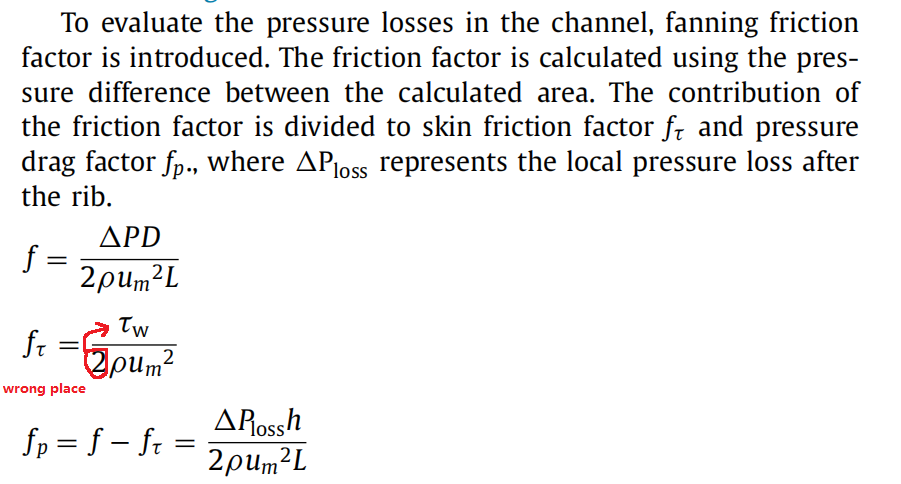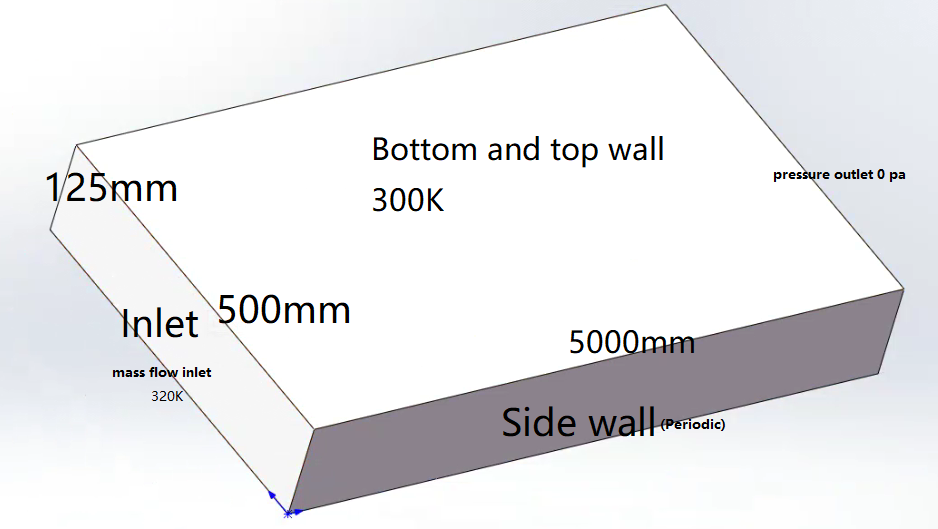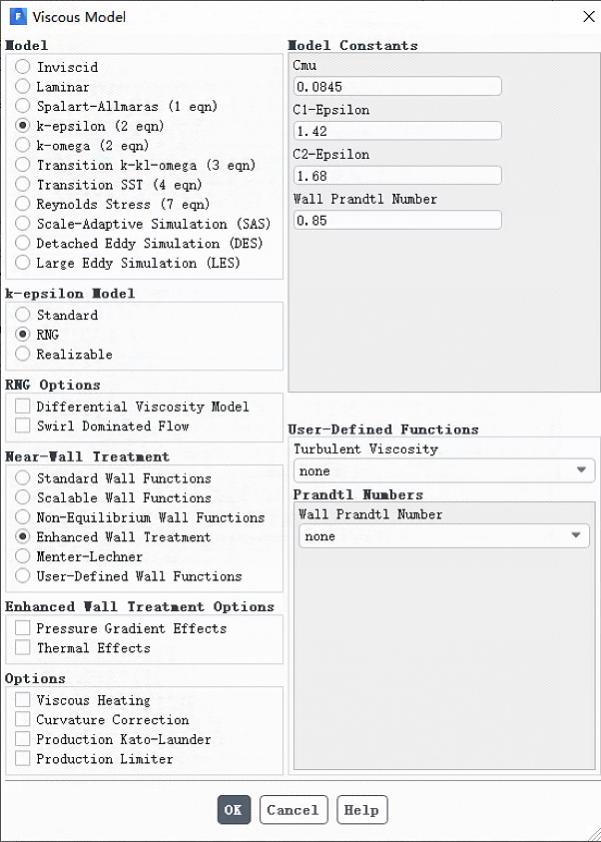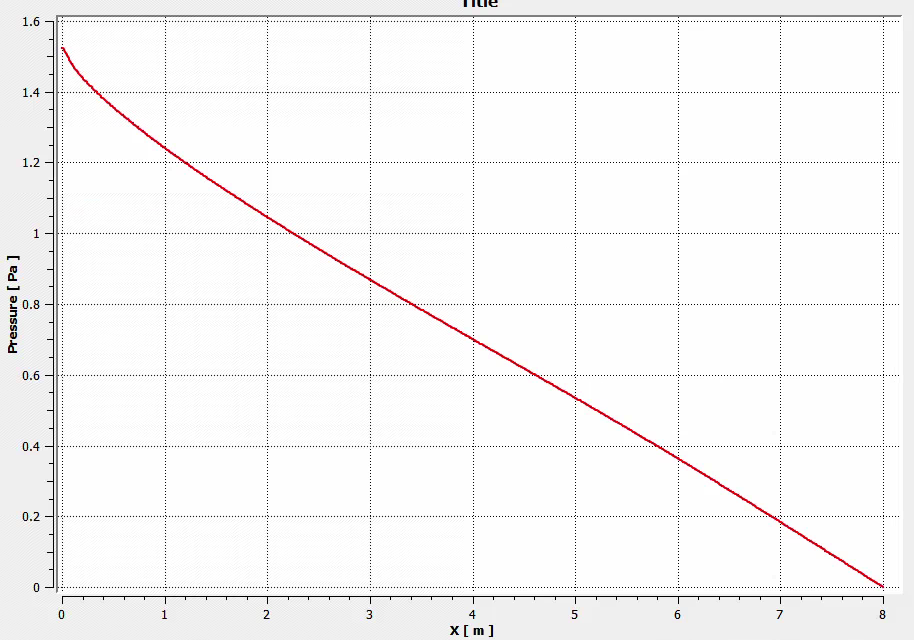TAGGED: ansysfluent, friction, pressure, Wrong-results
-
-
August 31, 2023 at 8:53 am
Alex Lee
SubscriberHello.
I am trying to reproduce a journal (https://doi.org/10.1016/j.ijheatmass...er.2021.121573) that simulates smooth rectangular channel and compares the values of the friction coefficient with theoretical formulas and journal data to check if my results are correct.
In this journal, there are two main types of friction, one is the total friction factor calculated using pressure drop, and the other is the skin friction (fanning) friction factor calculated using wall shear stress.But the total friction coefficient I calculated is only about 5/6 of the theoretical value, and strangely, the skin friction factor is close to the theoretical value. But in a smooth channel, the two should be equal , and a portion of the friction is even greater than the total friction, which is outrageous. I want to know why this situation happened? What is the problem with my simulation?
The following are my simulation details. The grids independence has been verified, and changing the physical parameters of air still results in errors. y+ is about 0.8 according to existing results. The (static) pressure drop used for calculation are obtained from the centerline of the area near the outlet to ensure that turbulence is fully developed.Wall shear stress also use a similar method.
-
September 1, 2023 at 8:16 am
NickFL
SubscriberThe most important question is what Reynolds number are you at? Also look at the pressure drop in the streamwise direction. Does that make sense, especially near the inlet?
-
September 1, 2023 at 2:03 pm
Alex Lee
SubscriberThank you for reply.
My Reynolds number is 20000. The theoretical formula I used, f=0.079 * Re ^ (-0.25), seems to be applicable only in fully developed turbulence, which is why I only use data from the area near the outlet for calculation. The pressure drop inferred from this formula should be approximately 0.23Pa/m, and the shear stress should be approximately 0.0115pa. The shear stress basically conforms to the theory. The figure shows the static pressure curve of the channel centerline calculated using a longer channel. Even for the entire flow area, the pressure drop still does not meet the requirements.
-
-
- The topic ‘RANS calculation result does not match the theoretical value’ is closed to new replies.



-
3597
-
1283
-
1117
-
1068
-
983

© 2025 Copyright ANSYS, Inc. All rights reserved.











